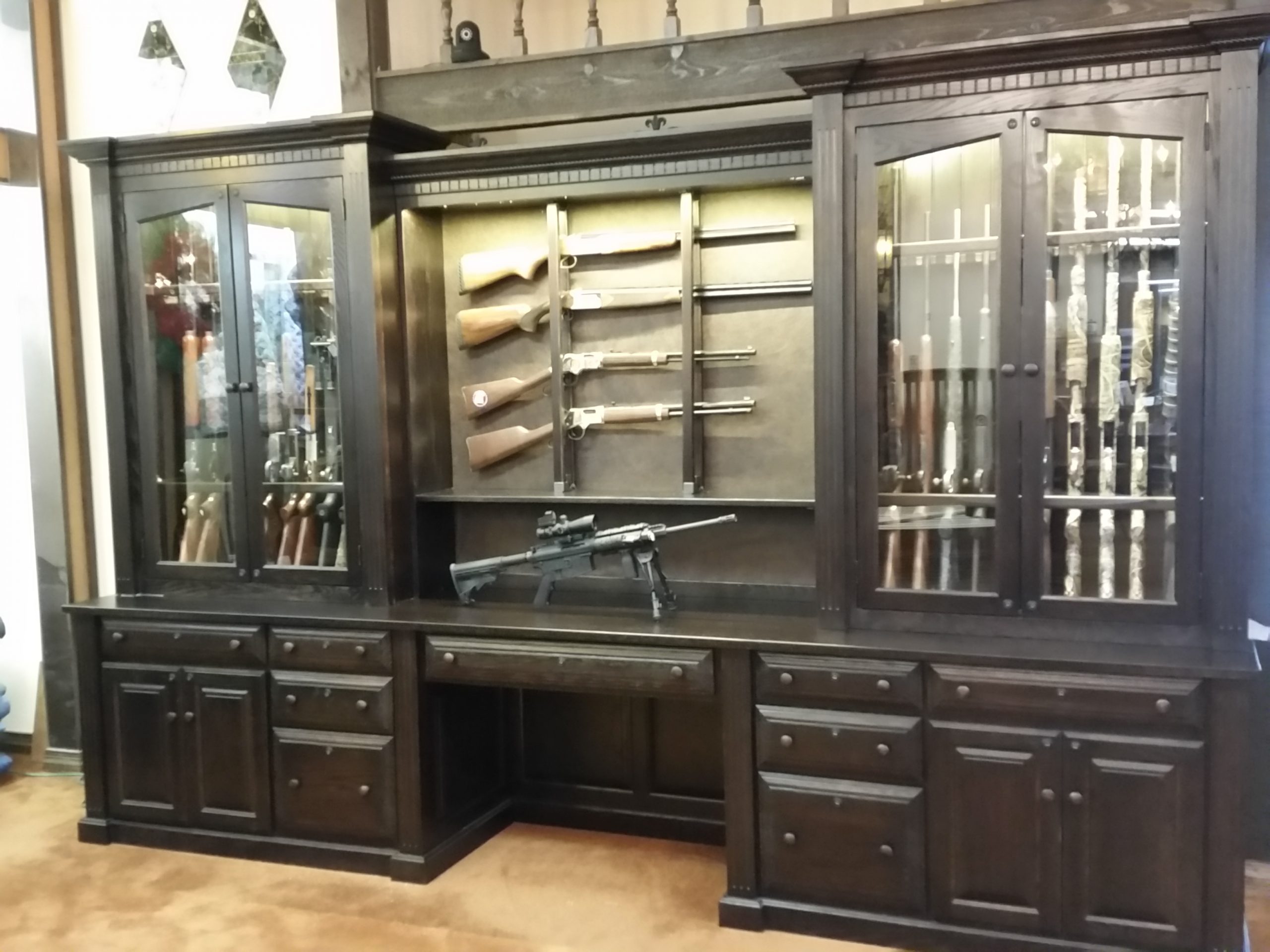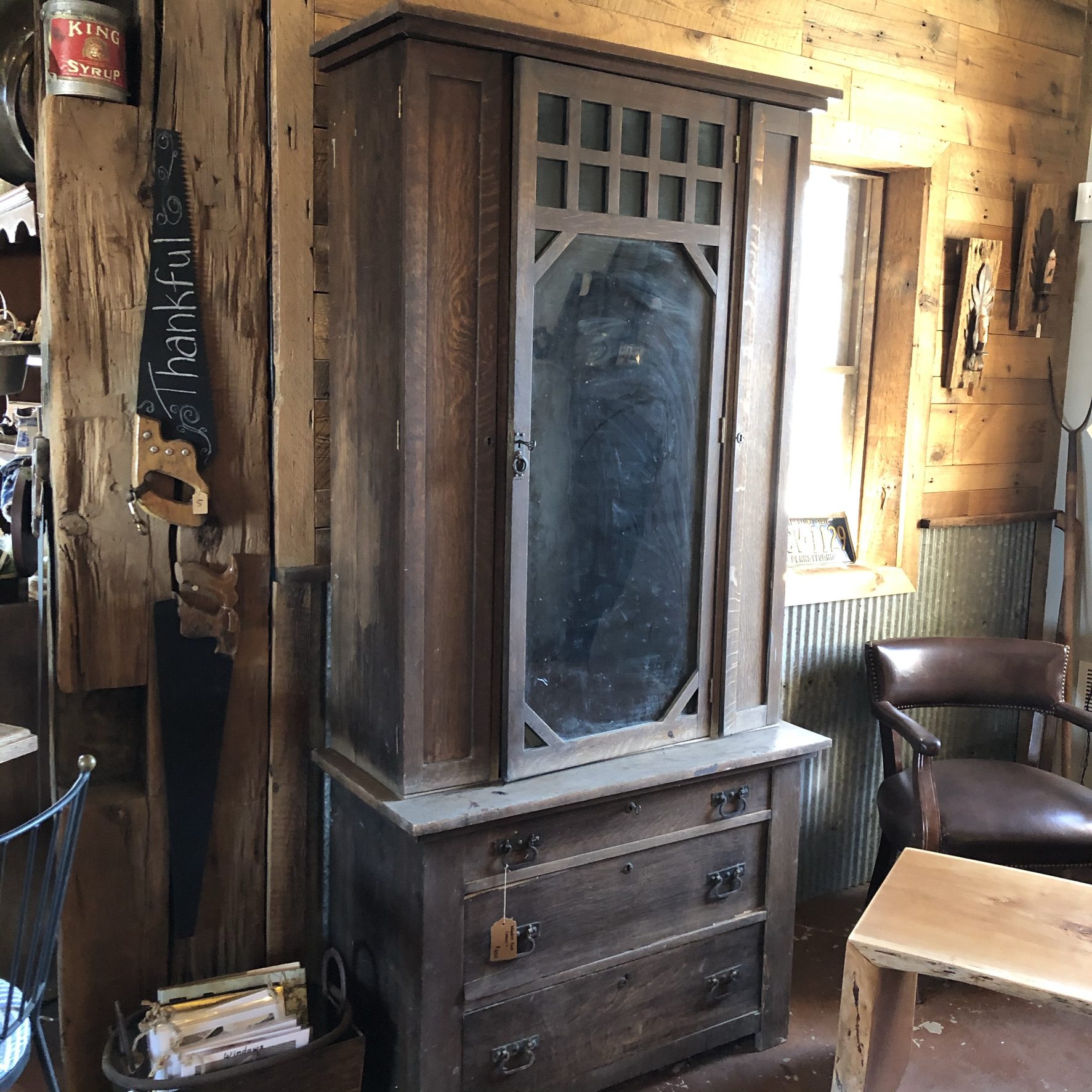History and Evolution of Antique Wooden Gun Cabinets

Antique wooden gun cabinets, more than just storage solutions, represent a fascinating journey through time, reflecting evolving needs, aesthetics, and craftsmanship. From humble beginnings as practical storage units, they transformed into intricate works of art, showcasing the finest woodcarving and decorative techniques.
Early Gun Cabinets: Practicality and Functionality
The earliest gun cabinets, dating back to the 17th and 18th centuries, were primarily designed for practicality. These cabinets were often simple in design, made of sturdy hardwoods like oak or walnut, with minimal ornamentation. They featured a single door, sometimes with a lock, and shelves or drawers for storing firearms and ammunition. Their primary purpose was to keep weapons secure and organized, particularly in a time when firearms were essential for self-defense and hunting.
19th Century: Embracing Elegance and Craftsmanship
The 19th century saw a shift towards more elaborate and decorative gun cabinets. The rise of industrialization and the availability of new materials and techniques allowed for more intricate designs. Gun cabinets became a symbol of status and wealth, often incorporating ornate carvings, intricate inlays, and polished finishes.
Styles and Designs
- Victorian Era: Victorian-era gun cabinets often featured elaborate carvings, intricate inlays, and dark, rich finishes. Common motifs included floral patterns, scrolls, and geometric designs. These cabinets were often made of mahogany, walnut, or rosewood, reflecting the Victorian era’s appreciation for luxury and craftsmanship.
- Art Nouveau: The Art Nouveau movement, which emerged in the late 19th century, brought a new aesthetic to gun cabinet design. Art Nouveau cabinets often featured flowing lines, organic forms, and decorative elements inspired by nature. They were frequently made of lighter woods like cherry or maple, with delicate carvings and metal accents.
- Art Deco: The Art Deco movement, popular in the 1920s and 1930s, brought a more geometric and streamlined aesthetic to gun cabinet design. Art Deco cabinets often featured bold geometric patterns, contrasting colors, and luxurious materials like ebony, ivory, and silver.
Materials and Craftsmanship
- Woods: Antique wooden gun cabinets were typically crafted from high-quality hardwoods, chosen for their durability, beauty, and workability. Popular choices included oak, walnut, mahogany, cherry, maple, and rosewood. The wood was often carefully selected for its grain patterns and color, adding to the aesthetic appeal of the cabinet.
- Metal Accents: Metal accents were often incorporated into antique gun cabinets, adding to their durability and visual appeal. Brass, copper, and iron were common choices, used for hinges, handles, locks, and decorative accents. Metalwork was often intricate and detailed, reflecting the craftsmanship of the period.
- Finishes: Antique wooden gun cabinets were often finished with a variety of techniques to enhance their beauty and protect the wood. Polishing, varnishing, and lacquering were common practices, creating a smooth, lustrous surface that highlighted the wood’s natural grain patterns. Some cabinets were also painted or stained, adding to their decorative appeal.
Identifying and Appreciating Antique Wooden Gun Cabinets

Antique wooden gun cabinets, with their timeless elegance and craftsmanship, stand as testaments to a bygone era. These sturdy pieces, often handcrafted with meticulous attention to detail, possess a unique charm that distinguishes them from their modern counterparts. Recognizing the defining characteristics of these treasures allows us to appreciate their historical significance and the artistry they embody.
Distinguishing Features of Antique Gun Cabinets
Antique gun cabinets, crafted during a time when woodworking was an art form, exhibit distinct features that set them apart. These characteristics are not merely aesthetic but also reflect the values and practices of their era.
- Solid Wood Construction: Antique cabinets were built to last, using high-quality hardwoods like oak, walnut, and cherry. These woods were prized for their strength, durability, and natural beauty.
- Hand-Crafted Details: The intricate carvings, hand-cut dovetail joints, and meticulous finishes found on antique cabinets are a testament to the skill of the artisans who created them. These details, often unique to each piece, add to their character and value.
- Traditional Hardware: Antique gun cabinets often feature ornate brass or iron hardware, including hinges, locks, and handles. These pieces, often handcrafted and sometimes even hand-forged, contribute to the cabinet’s overall aesthetic and historical authenticity.
- Distinctive Designs: Antique gun cabinets showcase a range of styles, influenced by prevailing architectural and decorative trends of their time. From the simple elegance of early American designs to the ornate flourishes of Victorian pieces, these cabinets offer a glimpse into the past.
The Value and Significance of Antique Gun Cabinets
Antique gun cabinets are not merely storage units but valuable historical artifacts that hold a unique place in the world of collectibles. Their worth is determined by a confluence of factors, each contributing to their overall desirability.
- Rarity and Age: Antique gun cabinets, especially those from earlier periods, are less common than their modern counterparts. Their age, often exceeding a century, adds to their historical significance and collector value.
- Maker and Origin: The reputation of the maker and the cabinet’s place of origin significantly influence its value. Renowned cabinetmakers or regions known for their craftsmanship command higher prices. For instance, a gun cabinet crafted by a renowned maker like Thomas Chippendale or a cabinet originating from the renowned furniture-making region of Chippendale, England, would be highly sought after.
- Condition and Restoration: The condition of an antique gun cabinet plays a crucial role in determining its worth. A well-preserved cabinet with original finishes and hardware is highly prized. Cabinets that have undergone restoration, while still valuable, may command lower prices, especially if the restoration was not done by a skilled conservator.
- Historical Significance: Antique gun cabinets, particularly those with a documented history or association with notable individuals or events, hold a special value. For example, a cabinet that belonged to a prominent figure in American history or one that was used in a significant historical event would be highly sought after by collectors and museums.
Examples of Notable Antique Gun Cabinets
The world of antique gun cabinets boasts a rich tapestry of examples, each with its own story to tell. Here are a few notable examples that illustrate the diversity and value of these treasures:
- Early American Gun Cabinet: Dating back to the 18th century, these cabinets often featured simple, functional designs with sturdy construction. Made primarily of oak or walnut, they were designed to protect firearms and ammunition while blending seamlessly into the rustic aesthetic of early American homes.
- Victorian Gun Cabinet: Victorian gun cabinets, crafted during the late 19th century, showcased ornate designs with intricate carvings, inlaid wood, and elaborate hardware. These cabinets reflected the Victorian era’s penchant for grandeur and craftsmanship, often serving as statement pieces in homes.
- Arts & Crafts Gun Cabinet: The Arts & Crafts movement, which flourished in the late 19th and early 20th centuries, emphasized handcrafted objects with simple, functional designs. Arts & Crafts gun cabinets often featured natural wood finishes, exposed joinery, and minimalist hardware, reflecting the movement’s ideals of simplicity and craftsmanship.
Preserving and Maintaining Antique Wooden Gun Cabinets

Antique wooden gun cabinets, like other valuable antiques, require careful preservation and maintenance to ensure their longevity and retain their value. This involves a combination of regular cleaning, restoration techniques, and preventative measures to protect them from damage and deterioration.
Cleaning and Maintenance
Regular cleaning is crucial for maintaining the condition of your antique wooden gun cabinet. It helps to remove dust, dirt, and grime that can accumulate over time and potentially damage the wood. Here’s a step-by-step guide:
- Dusting: Use a soft, dry cloth or a feather duster to remove loose dust and debris from the cabinet’s surface, including the intricate carvings and details. Avoid using abrasive cloths or cleaners that could scratch the finish.
- Polishing: Depending on the finish of the cabinet, you can use a specialized wood polish or a mild solution of water and white vinegar to clean and polish the surface. Apply the polish in a circular motion, following the grain of the wood. Avoid using harsh chemicals or cleaners that can strip the original finish.
- Interior Cleaning: Clean the interior of the cabinet with a damp cloth to remove dust and debris. Be careful not to soak the wood, as excessive moisture can damage it. Ensure the interior is completely dry before closing the cabinet.
- Hardware: Clean the metal hardware, such as hinges, locks, and handles, with a mild soap solution and a soft cloth. Avoid using abrasive cleaners or polishers that can damage the metal.
- Ventilation: Ensure proper ventilation within the cabinet to prevent moisture buildup, which can lead to mold and mildew growth. You can achieve this by leaving the cabinet doors slightly ajar when not in use.
Restoration Techniques, Antique wooden gun cabinets
Antique wooden gun cabinets may require restoration to address damage, refinish surfaces, or address issues like woodworm infestations. Here are some common restoration techniques:
- Woodworm Infestation: Woodworm infestations can cause significant damage to the wood. Treatment involves applying a specialized woodworm insecticide to kill the larvae and prevent further damage. It’s essential to follow the manufacturer’s instructions carefully and ensure proper ventilation during and after the treatment.
- Cracks and Splits: Small cracks and splits can be repaired using wood filler or epoxy resin. Apply the filler or resin to the crack, smooth it out, and allow it to dry completely. Sand the area to blend it with the surrounding wood.
- Scratches and Dents: Minor scratches and dents can be repaired using a wood filler or a touch-up pen. Apply the filler or pen to the affected area, smooth it out, and allow it to dry completely. Sand the area to blend it with the surrounding wood.
- Refinishing: If the original finish is damaged or worn, you may need to refinish the cabinet. This involves stripping the old finish, sanding the wood, and applying a new finish. It’s crucial to choose a finish that complements the original style and age of the cabinet.
Essential Tools and Materials
Here’s a table outlining the essential tools and materials needed for the proper care and maintenance of antique wooden gun cabinets:
| Tools and Materials | Description |
|---|---|
| Soft, dry cloth | For dusting and cleaning the cabinet’s surface. |
| Feather duster | For removing loose dust and debris from intricate carvings. |
| Wood polish | For cleaning and polishing the wood surface. |
| Mild soap solution | For cleaning metal hardware. |
| Wood filler or epoxy resin | For repairing cracks and splits. |
| Touch-up pen | For repairing minor scratches and dents. |
| Woodworm insecticide | For treating woodworm infestations. |
| Sandpaper | For smoothing out filler, resin, or touch-up pen. |
| Paintbrush | For applying wood polish or refinishing materials. |
| Gloves | For protecting your hands during cleaning and restoration. |
Antique wooden gun cabinets, with their intricate carvings and sturdy construction, speak of a bygone era. They’re a testament to craftsmanship, much like the German bathroom mirror cabinets known for their sleek design and impeccable functionality. While one protects firearms, the other safeguards toiletries, both showcasing a dedication to quality and aesthetics.
Antique gun cabinets, however, might have an edge in terms of sheer intimidation factor.
Antique wooden gun cabinets, with their intricate carvings and sturdy construction, are a testament to a bygone era. While they may not be ideal for storing toiletries, their aesthetic appeal is undeniable. Perhaps a more modern solution for storing your bathroom essentials would be a sleek tall gray bathroom cabinet , offering both style and functionality.
Of course, if you’re looking for a piece to display your vintage firearms, there’s nothing quite like a well-preserved antique wooden gun cabinet to add a touch of rustic charm to your home.
